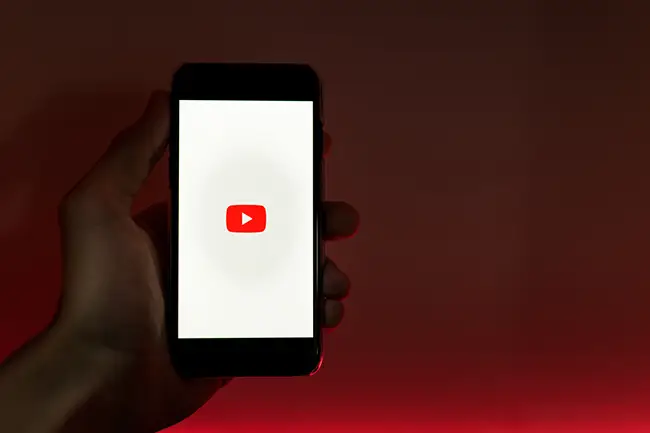The way people consume content has changed in the last 20 years. Until about 2006, the way most people engaged with the news was through television or their local newspaper.
The way adults self-educated was primarily through books or listening to lectures. The kinds of resources Christians sought out for spiritual development and enrichment beyond their church activities were primarily in print or on tape.
To say “times have changed” when it comes to the way people consume content is a tremendous understatement. When social media started to dominate the internet around 2006 with the expansion of Facebook beyond college campuses, the way we all consume content changed dramatically.
Combine the deluge of social media platforms with the proliferation of higher and higher speeds of internet connectivity and you pave the way for perhaps the most influential medium available to content creators today: online video.
Video Killed the Radio Star
YouTube is the second most popular website and even the second most popular search engine in the world behind only Google, the company that bought it.
By the year 2022, online videos will make up more than 82% of all consumer internet traffic, which is 15 times higher than it was in 2017. About 78% of internet users watch online videos weekly, and 55% watch some form of online video every day. Three out of every four videos are watched on a mobile device, and 83% of people who view videos online view them with the sound off.
Video is dominating the internet, especially in its most social spaces. Why do people love video? For many, video is more compelling and holds attention better than a wall of text.
Why do 27% of American adults not read a single book in a year? Because watching their favorite crime-solvers on TV or their favorite documentaries on Netflix are more entertaining to them than a mystery novel or a biography they may buy.
Reading, whether online or on paper, requires a certain amount of attention and mental function that reclining in an easy chair and watching a TV show or YouTube video doesn’t require. It makes sense.
Today we find ourselves in a media context in which social media and video dominate the time of young and old Americans alike. This means it is no surprise that some of the most recognizable and influential people in the lives of American young people are professional YouTubers or Twitch streamers.
But it needs to be said: Not just anyone can upload a video to YouTube, Facebook, or any other platform and expect to hold the attention of hundreds, thousands, or more. Despite many who jeer at the fact that a 25-year-old can make millions of dollars playing video games on the internet while people watch, it takes strategy, talent, and a little bit of algorithmic pixie dust to create video that succeeds online.
What Makes Good Online Video Content?
Back in 2016, my eyes were opened to an egregious oversight in my work as a social media strategist. I had spent the better part of about four years studying social media platforms like Facebook, Twitter, and Instagram to better understand what made content succeed on each of the platforms.
Most of this research and experimentation was for work, but I’m the kind of person who spent a good bit of my free time studying this stuff as well. Studying algorithms, engagement statistics, and other social media data is fascinating to me.
But I realized: I was completely ignoring YouTube. Because our work strategy and efforts were centralized on Facebook, Twitter, and Instagram, YouTube was completely off my radar.
I had never subscribed to a YouTube channel. I didn’t really know any of the famous personalities on the platform. I knew it was influential, but it wasn’t even in my mental “social media” category. I occasionally searched for handyman helps, movie trailers, or other such content on the platform, but it wasn’t an outpost on the social internet I visited with any regularity.
But once I realized the force of YouTube as a social media platform, I devoted about two solid months of research to it. I began following about 15 of the most popular video channels in the world. I subscribed to vloggers (video bloggers) and YouTubers from a wide variety of categories.
I wanted to answer the question: What do all of these YouTubers have in common despite their different genres? My goal was to find the “lowest common denominator” of YouTube content to discover the shared practices of successful YouTubers and to determine what strategies transcend genres?
I learned a lot about YouTube, but Christians and churches thinking about video content should understand the three most basic elements I discovered about how to gain traction with your videos: create consistent content, serve your intended audience, and know the platforms.
Consistent content creation
One of the most common questions I get when I’m coaching a person, church, or organization on video strategy is, “How often do we need to post video?” My answer is always: “Consistency is more important than frequency.”
This is true not only for video content, but really for any online content strategy. The most successful YouTubers in the world don’t all post every single day—in fact most of them don’t—but they do post with a consistent rhythm.
Some post every Tuesday and Thursday. Some post once a week on Fridays. No matter the genre, the most successful YouTubers and other video creators have a reliable schedule that doesn’t keep their audiences guessing when the next video may be coming.
In fact, some content creators will even communicate to their audience when they’re taking time off, whether it be for just a couple of days or even a month. If you’re a church leader or in charge of social media strategy at a Christian organization of some kind, don’t assume you either have to post every day or not at all.
One of the most common mistakes I’ve seen in clients I’ve coached is a fervor out of the gate—with the client posting four videos a week—only to have burnout set in after just a few weeks or months.
If you’re hoping to deploy a new video strategy, take it easy and start slow. Maybe post a video a week or so. Then, once you have a rhythm and you have streamlined your content creation process, maybe consider increasing your frequency.
Genuine consideration of audience
Another common mistake people make when they are new to creating video content for the internet is misunderstanding the people for whom they are creating content. This is a natural, human problem.
Often, we create the content we want to create, rather than considering how our gifts may serve a specific audience with a specific need or set of needs. I’ve had a few conversations with frustrated clients in the past who tell me something like, “I just don’t understand why no one is watching my videos. They’re clever. They’re short. They look pristine.”
After a short discussion, they often realize the problem isn’t their production or strategy, but that their content may be interesting to them and not to the audience they’re trying to reach.
By all means, church leaders or Christian organizations should create content they believe God has uniquely gifted them to create. But if, for example, a 26-year-old youth pastor is hoping to reach Christian teenagers on YouTube with 30-minute-long explanations of what Romans 8 says in the original Greek, he’s probably going to end up feeling more frustrated than fruitful. That content may be interesting to him but might not pique the interest of his intended audience.
Successful online content creators have an intimate understanding of their audiences and the needs of those audiences. Equipped with this knowledge, they use the gifts they have to address the needs of those audiences.
If we set out to create a certain kind of content simply because we find it interesting, we may have fun and enjoy the hobby of creating videos, but we shouldn’t be surprised when others aren’t automatically drawn to our content.
Basic understanding of algorithms and platforms
If you’re setting out to create video content on the internet, it really helps to know the quirks, rules, and best practices for the various places on which you want to showcase your work. What works on Facebook doesn’t always work on YouTube. The kind of video you post on Instagram may need to be a bit different than what you post on Twitter.
Certain strategies can help you appear in peoples’ feeds and “recommended videos” tabs. Understanding the machinations of the various platforms only requires some study and minor changes to posting times, titling, thumbnail-editing, or other such details in order to enable advantages that can lead to exponentially more views than if you ignored these specifics entirely.
For example, the quality of video one expects on Facebook is different than what one expects on YouTube. One of the most “viral” videos in recent Facebook history is a video of a woman using the front-facing camera on her phone on shaky cell signal in the parking lot of a Kohl’s department store.
“Chewbacca Mom” certainly didn’t have a fancy ring light or camera setup. The quality simply didn’t matter because people enjoyed (and shared) the content. This is the case for a lot of Facebook video.
On YouTube, however, there tends to be a much higher expectation in terms of production quality and equipment. That doesn’t mean poor quality videos don’t succeed—they often do—it simply means that the audiences have different levels of expectation, and a lackluster quality YouTube video may be hindered because of its quality when the same may not be said for Facebook.
This is just one example of how platforms are different. There are many factors to consider here. The algorithms and hidden functionality of social media platforms feel like a black box for many people, and these things change often.
So, if someone or a church really wants to invest in video content, it may be easier to hire a consultant who already stays on top of all of these details. Otherwise, would-be content creators may spend all their time Googling question after question in hopes of finding the most up-to-date information.
Find Examples and Keep Some Perspective
Unfortunately, Christians are lagging behind the curve when it comes to innovative online video. Many Christian ministries are just now getting the hang of social media generally, and any video they create for YouTube or otherwise tends to be video that was used for some sort of offline purpose and just uploaded to the internet as a means of housing for posterity.
However, if you’re looking for some great examples of people who are crushing it at online video, I would encourage you to check out The Bible Project and Holy Post. These two groups are creating some of the best Christian video content today.
There are surely others, but these two groups stand out as content creators that understand what makes video watchable, educational, and in alignment with the platforms on which they create.
As of 2018, Lifeway Research reports that about 84% of churches had a Facebook page and only 13% of churches had an Instagram account. I would imagine that the percentage of churches who have YouTube channels hovers around the same number as those who have Instagram accounts, if not lower.
People are consuming content and are being discipled by online content, especially online video content. The local church should seize this opportunity, not ignore it.
This article was originally written by Chris Martin, content marketing editor at Moody Publishers and a social media, marketing, and communications consultant. It was published on lifewayresearch.com

